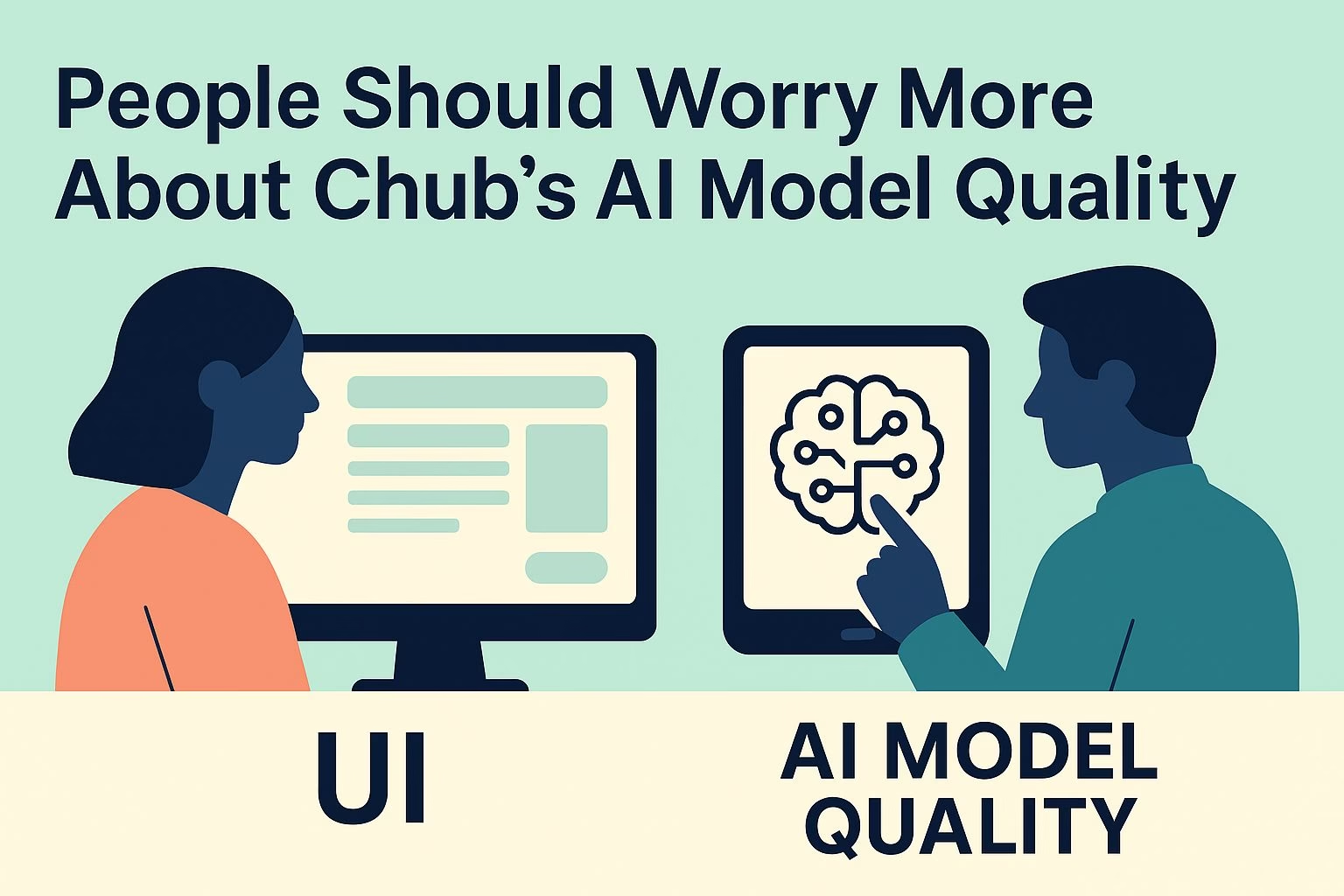Users Should Worry More About Chub’s AI Model Quality
• Chub’s users are divided between UI improvements and AI quality upgrades.
• Long-term growth depends on refining Soji’s reasoning and emotional consistency.
• Chub’s best path forward is prioritizing performance transparency and incremental upgrades.
Most people in the Chub AI community seem more focused on the platform’s user interface than on how well its models actually perform.
That’s what stood out most in the Reddit post where users debated whether Chub’s UI or model quality deserved more attention.
The original poster made a fair point: Soji and other models are great, but users who spend hours in long, complex chats deserve better long-term improvements.
The discussion revealed a clear divide. Some users argued that UI changes directly affect their daily use, while others said AI model updates matter more for those who rely on Chub for roleplay sessions.
Both sides have valid concerns, but the bigger question is whether Chub can continue improving its models without relying too heavily on external sources like DeepSeek.
A few users mentioned that Soji is already built on DeepSeek, and there’s not much room for upgrade until newer open-source models appear.
Others noted that Chub should find ways to improve reasoning performance by hiding or managing model “thinking” output.
These small but technical tweaks could significantly raise model quality without requiring a complete rebuild.
The thread also brought up cost and fairness. Some users said they pay subscriptions to support Chub’s infrastructure, not necessarily for exclusive model access.
Others compared the $20 price tag to competing sites offering DeepSeek-based models for under $10.
This shows that the value perception among users depends not only on model quality but also on how Chub communicates what users are paying for.
Model Quality Matters More Than UI Changes
Model quality directly shapes how conversations feel. When users engage in roleplay sessions, story-driven chats, or emotional exchanges, weak reasoning or repetitive outputs break immersion fast.
Even a clean interface cannot fix an AI that doesn’t understand nuance. That’s why some long-time users in the thread said they’d rather see performance upgrades than endless design tweaks.
The Chub community depends heavily on models like Soji, which are tuned for specific creative styles. But without new model sources, improvements stay limited.
DeepSeek is currently the foundation, and unless a bigger or more flexible open-source model becomes available, Soji may only evolve through parameter adjustments.
This is why people have started experimenting with presets and fine-tuning within Chub instead of waiting for the next model drop.
In contrast, UI concerns, though legitimate, affect comfort, not capability. Moving a download button or changing chat layout might confuse some users, but it doesn’t change what the model can do.
As one commenter put it, caring only about design is like worrying about where your car’s cup holder is while ignoring engine issues. The AI model is the engine.
Those who care about AI companions and story-based interactions understand how subtle differences in model reasoning can transform the experience.
This is where alternatives like Nectar AI have drawn attention; they prioritize conversational quality and customization over design updates.
Chub could learn from that focus if it wants to remain competitive in the long run.
The Issue Behind Chub’s Model Plateau
The bigger concern isn’t just that Chub’s models aren’t improving; it’s that they may not be able to without external help.
Building a proprietary AI model from scratch requires massive datasets, computing power, and expertise.
Open-source projects like DeepSeek or LLaMA often become the backbone of smaller sites because they provide that technical head start.
But depending too much on them means Chub’s progress is tied to releases it doesn’t control.
Users also brought up something subtle but important: how “thinking” output affects reasoning models. When Chub’s UI exposes too much of the model’s reasoning, it can actually hurt performance.
Suppressing or hiding that process would make models more natural in their responses.
These changes may sound minor, but can create a smoother chat flow and more believable AI characters.
Then there’s the price debate. A $20 subscription feels steep when model updates slow down. One user mentioned paying $7.99 elsewhere for DeepSeek-level models and better performance.
That kind of comparison hurts Chub’s reputation, especially when its best defense is a UI redesign instead of visible model improvements.
If Chub wants to regain trust, it has to show measurable leaps in quality, not just cosmetic updates.
Balancing User Experience and Technical Progress
For Chub to maintain its user base, both sides, UI and model quality, must evolve together. Ignoring either one risks alienating a part of the community.
People who only upload or download bots depend on a clean, reliable interface. Roleplay users, on the other hand, want deeper personality consistency and better emotional depth.
When both groups feel heard, loyalty follows.
Right now, the balance feels off. The frequent UI tweaks show effort but may not align with what long-term users actually value.
Several comments pointed out that while the platform adds new features like the “wizard tool,” model accuracy and responsiveness lag behind.
Users who pay expect clear evidence of progress under the hood, not just design polish. If Chub’s team shifted its focus toward enhancing reasoning and reducing repetition, users might view the price as fairer.
The fix isn’t necessarily a full overhaul.
As some experienced creators noted, small changes in model behavior, such as better context memory, smoother emotional transitions, and improved creative responses, could drastically enhance satisfaction.
Investing in subtle but meaningful upgrades would show commitment to quality without overwhelming development resources.
Chub has a passionate community willing to support it financially and creatively.
Tapping into that energy through open feedback sessions or public model updates could bridge the current gap between expectation and delivery.
When users see transparency and progress, loyalty becomes natural instead of conditional.
What Chub Can Learn from the Competition
Other AI companion platforms have faced the same growing pains. Candy AI, for instance, emphasizes private, emotional conversations without visible “thinking” clutter.
Its interface is minimal, but the focus on believable personality depth makes users stay longer.
Nectar AI takes a similar route by offering flexible personas and responsive dialogue mechanics. Both examples show that investing in smarter models often does more for retention than redesigning the interface.
These alternatives prove that users don’t need flashy dashboards; they want models that feel alive.
If Chub shifted its resources toward improving reasoning chains, emotional recall, and context stability, it could easily close the gap.
Stronger models also make the community more creative since bot creators can build richer personalities that perform consistently across sessions.
There’s also a marketing benefit. When people start comparing sites, model quality becomes the deciding factor. Users may forgive a cluttered UI, but not a shallow or repetitive chat.
If Chub focused its message on “better conversations, not just prettier screens,” it could reshape public perception fast. The groundwork already exists, Soji is a solid model, but it needs more refinement to compete in 2025’s AI companion market.
At its core, Chub’s challenge is clarity of direction. Listening to the community that values deep, story-driven interactions could guide the next phase of development better than another design sprint.
The opportunity is still there; it just requires choosing model depth over interface polish.

